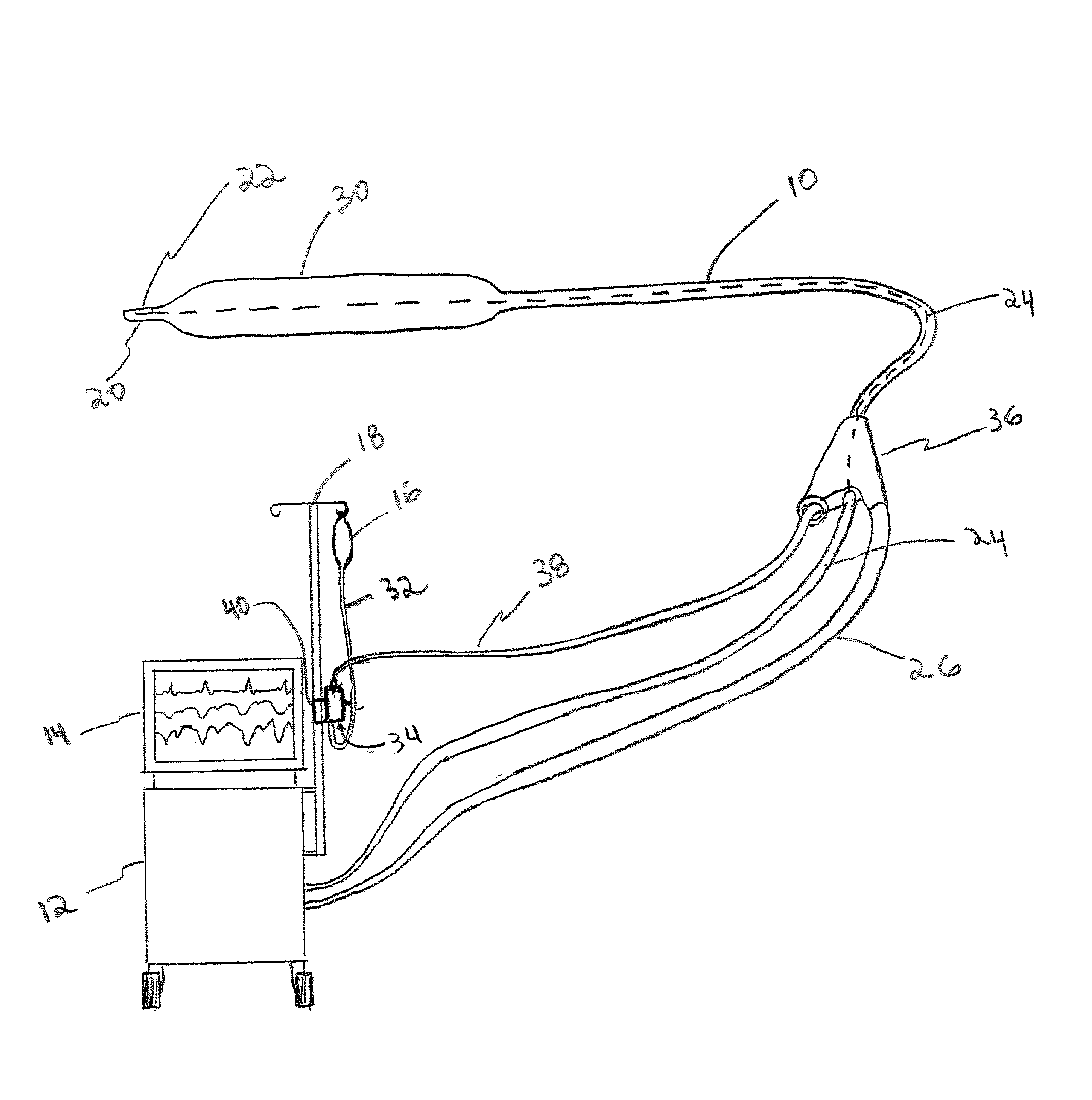Intra-aortic balloon catheter having a dual sensor pressure sensing system
- Summary
- Abstract
- Description
- Claims
- Application Information
AI Technical Summary
Benefits of technology
Problems solved by technology
Method used
Image
Examples
Embodiment Construction
[0025] FIG. 1 illustrates the system of the present invention comprising an intra-aortic balloon ("IAB") catheter 10, an intraaortic balloon pump ("IABP") 12, a monitor 14, a drip bag 16, and a drip bag holder 18. FIG. 1 is a perspective view of the system with the IAB catheter 10 in the foreground and the IABP 12 is the background for clarity. The IAB catheter 10 contains a catheter pressure sensor 22 connected to its tip 20 and a Y-fitting 36 on its proximal end. The catheter pressure sensor 22 is connected to the IAB pump 12 via pressure sensing line 24, shown as ghost lines in the IAB catheter 10. Inflate / deflate tube 26, connecting an outer lumen of the IAB catheter 28 (see FIGS. 3-4) and the IABP 12, is used for inflation and deflation of a balloon membrane 30 connected between the tip 20 and a distal end of the IAB catheter 10. Drip tube 32 connects the pressurized drip bag 16 to a flush device 34. Saline tube 38 connects the flush device 34 with an inner lumen 60 of the IAB ...
PUM
 Login to View More
Login to View More Abstract
Description
Claims
Application Information
 Login to View More
Login to View More - R&D
- Intellectual Property
- Life Sciences
- Materials
- Tech Scout
- Unparalleled Data Quality
- Higher Quality Content
- 60% Fewer Hallucinations
Browse by: Latest US Patents, China's latest patents, Technical Efficacy Thesaurus, Application Domain, Technology Topic, Popular Technical Reports.
© 2025 PatSnap. All rights reserved.Legal|Privacy policy|Modern Slavery Act Transparency Statement|Sitemap|About US| Contact US: help@patsnap.com



